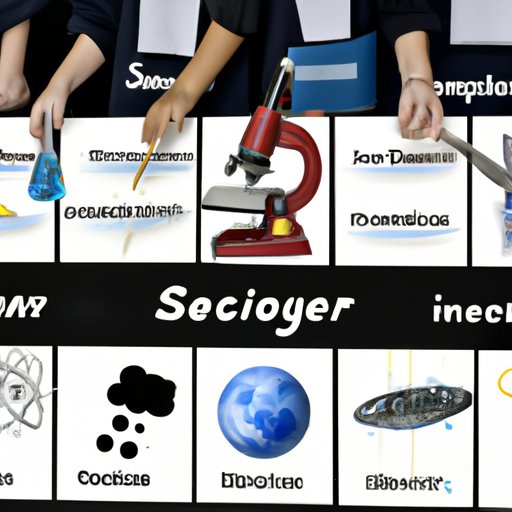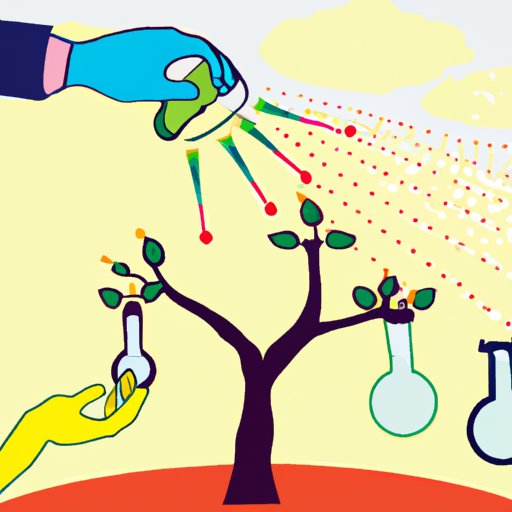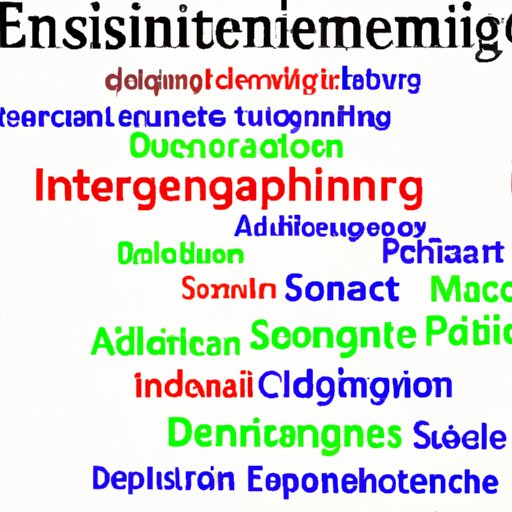Introduction
Science is a multifaceted field of study that encompasses a wide range of disciplines, from physics and chemistry to biology and ecology. It is an ever-evolving field of knowledge, characterized by the pursuit of understanding the natural world through observation, experimentation, and analysis. In this article, we will explore what makes science science, examining the definition and characteristics of science, the scientific methodology, the role of technology and mathematics, and the interdisciplinary nature of science.

Exploring the Definition and Characteristics of Science
Science can be broadly defined as the systematic study of the structure and behavior of the physical and natural world through observation and experiment. According to the National Academy of Sciences, “Science is the pursuit of knowledge and understanding of the natural and social world following a systematic methodology based on evidence.” This definition emphasizes the importance of evidence-based inquiry and the use of the scientific method to uncover new knowledge about the world.
The nature of scientific inquiry is characterized by curiosity and skepticism. Scientists ask questions about the natural world and strive to answer them through rigorous investigation. The process of scientific inquiry involves making observations, forming hypotheses, designing experiments, collecting data, analyzing results, and drawing conclusions. This iterative process requires critical thinking and creativity to solve complex problems.
Objectivity and empiricism are essential components of science. Scientists strive to make unbiased interpretations of data, relying on empirical evidence rather than personal beliefs or opinions. Scientific findings are based on careful observation and replication of results in order to eliminate any bias or error. Additionally, scientists must be willing to accept alternative explanations when evidence does not support their initial hypothesis.
The role of hypothesis testing and experimentation is also essential to science. Hypotheses are testable predictions that are used to explain phenomena and generate new knowledge. Experiments are designed to test hypotheses and provide evidence to support or refute them. The results of experiments can then be used to refine existing theories or develop new ones.
Examining the Scientific Methodology
The scientific methodology is a set of principles and procedures used to systematically investigate phenomena and draw valid conclusions. It is used to gain an understanding of the natural world and make predictions about future events. The scientific method involves making observations, collecting data, forming hypotheses, conducting experiments, analyzing results, and drawing conclusions.
Experimental design is a key part of the scientific methodology. Experiments must be carefully planned and executed in order to produce meaningful results. The design of an experiment should be tailored to the question being asked and the conditions under which it is conducted. Variables must be identified and controlled in order to ensure accurate results.
Data collection and analysis are also important aspects of the scientific method. Data must be collected and analyzed in a systematic way in order to draw valid conclusions. Statistical methods are often used to analyze data and identify patterns or trends. Results should then be interpreted and reported in a clear and concise manner.
Investigating the Role of Technology in Science
Technology has revolutionized the way science is conducted. Advances in technology have enabled scientists to measure, analyze, and interpret data more accurately and quickly than ever before. Technology has allowed scientists to explore new fields of research, such as genetics and nanotechnology, and to make discoveries that were previously impossible.
Technological applications are used in many areas of research and fieldwork. For example, satellite imaging is used to monitor environmental changes, robotics are used to explore inaccessible areas, and DNA sequencing is used to identify species. These technologies allow scientists to collect data in ways that were not possible before and to make faster progress in their research.
Technology has also enhanced scientific communication. Electronic databases, online journals, and other digital tools have made it easier for scientists to share information and collaborate with one another. Social media platforms, such as Twitter and Reddit, are also being used to engage the public in conversations about scientific topics.

Analyzing the Role of Mathematics in Science
Mathematics plays an important role in science, providing a language for expressing and communicating scientific ideas. Mathematics is used to formulate models and equations that describe the behavior of natural phenomena. Mathematical principles are used to solve problems and make predictions about the future.
Mathematics is also used in problem solving and modeling. Scientists use mathematical models to analyze data and identify patterns or trends. Models can also be used to simulate real-world scenarios and predict the outcome of future events. Mathematical models are used in a variety of disciplines, including economics, engineering, and medicine.
Finally, mathematics is used to understand complex phenomena. By applying mathematical principles, scientists can gain insight into the underlying causes and effects of certain processes. For example, mathematical models are used to understand the behavior of particles in quantum mechanics and the dynamics of fluid flow in aerodynamics.

Investigating the Interdisciplinary Nature of Science
Science is an inherently interdisciplinary field of study. Many scientific problems require collaboration between different disciplines in order to be solved. Interdisciplinary science integrates knowledge from multiple disciplines in order to gain a better understanding of a particular topic.
Interdisciplinary science offers many benefits, such as expanded perspectives, increased creativity, and improved problem-solving abilities. Collaboration between different disciplines allows scientists to develop new insights and approaches to tackling complex issues. Additionally, interdisciplinary studies help to bridge the gap between different academic fields and foster greater cooperation among researchers.
Examples of interdisciplinary science include biomedicine, environmental science, and computer science. Biomedicine combines elements of biology, medicine, and engineering to develop treatments for diseases. Environmental science integrates knowledge from biology, chemistry, geology, and other disciplines to study the environment. Computer science combines elements of mathematics, engineering, and other disciplines to develop new technologies.
Conclusion
In conclusion, science is an ever-evolving field characterized by evidence-based inquiry and the use of the scientific method to uncover new knowledge about the world. It is distinguished by its emphasis on objectivity, empiricism, hypothesis testing, and experimentation. Technology and mathematics play an important role in science, while interdisciplinary studies are essential to advancing our understanding of complex phenomena. This article has explored what makes science science and provided an overview of the definition, characteristics, and methodology of science.
(Note: Is this article not meeting your expectations? Do you have knowledge or insights to share? Unlock new opportunities and expand your reach by joining our authors team. Click Registration to join us and share your expertise with our readers.)
